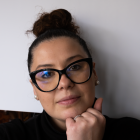Challenges in the field: the lessons I learnt
My last three postings before coming to the UNDP Headquarters in New York were in Serbia, India and Indonesia and I feel there are three main things I learnt: the importance of partnerships, the importance of communication, and the importance of innovation.
I truly believe that as development and aid organisations we cannot work isolated. It is clear to me that we cannot do anything of significance just by ourselves. We need to work with partners, whether it’s other development organisations, the government, the private sector or civil society. It is absolutely critical we forge partnerships with one another if we hope to bring change.
I also think that sometimes communication is an afterthought, and it tends to become all about the promotion of organisations. To the contrary, we need to look at communication as a tool to change mindsets and beliefs about different issues.
Let me give you a practical example. When I was in Serbia, I was particularly proud of the communication campaign called “It is my business,” which was about smashing taboos around gender violence being a private issue. One year, this campaign came about during the 16 days of ending violence against women but tragically took place when a famous girl blogger committed suicide in Serbia due to online harassment. She was practically the only woman in her field, which is very male dominated.
This tragic event gave us the possibility to start a conversation about shaming, bullying and violence online. We really wanted this campaign to be about outreach and we thus engaged with influential people, including men and boys. The campaign was quite successful, and I am really proud of it.
Unfortunately, in many countries around the world, we are now witnessing increased backsliding on women’s rights and gender equality. It is really important that we act now.1 A big part of that is using outreach and communication to monitor and understand local situations and challenges with the objective to find solutions to contrast regressive attitudes with respect to women’s rights, and beyond.
The third lesson learnt in the field is the importance of innovation, especially in countries like India and Indonesia where change is happening so fast. You always need to be on top of shifting situations because if you are not on top of innovation, especially in those countries, what role do you have? I think trying to be ahead of the curve, especially in some of those middle-income countries, and especially in the digital field is absolutely key.
What works, what does not work in the field and what comes after
I think there's one big key challenge that we face when we're working in development and in the field today. And that is linked to the fact that challenges are too complex. Think of climate change, pollution or even migration: these are all difficult issues that cannot be simplified easily. It feels like the tools we have as development organisations today fall short in addressing the kind of challenges we are faced with.
The projects we design and implement are too linear. We address issues and tackle challenges in a projectised way, without taking into account that objectives can change and that not all the approaches that worked in the past will necessarily work in today’s contexts.
Let me offer an example. We implemented an initiative in partnership with the EU to promote the Green Deal in Serbia with a grant of about 10 million euro. To make this happen, we worked closely with the European Investment Bank and came up with a joint proposal which revolved around the idea of investing the grant money in pipeline initiatives that would support the green transition. The financing would then go to startup businesses trying to become greener. Once these would show they were viable, the EIB would come in with loan money to help businesses scale up their work. Engaging with the small-scale private sector was definitely a good thing. We then created a platform rather than a project per se and several other donors expressed their interest in coming in with investment. This is a completely different model that goes beyond traditional aid and grants.
With this experience in mind, we’ve been liaising with the European Commission’s DG NEAR to set up a facility for transformational initiatives in green spaces in cities, for example. These facilities support and promote initiatives that can potentially go to scale and then, once they are ready, banks and the private sector step in with investment.
A word of advice to fellow international development professionals
Go to the field! If you work in development organisations, you need to be where things happen: it is in country offices that you really understand how to promote and implement transformational change.
As an international development professional, you first need to grasp how decisions are made in a country and appreciate how complex decision-making is. In his book Gambling on Development, Stefan Dercon says that development change essentially happens when political and economic elites make deals. How easily these are reached is a completely different story.
In the leadup to the SDG Summit in September, UNDP produced reports giving SDG-related insights from 95 countries around the world, showing how governments are advancing in meeting the SDGs. The overall prognosis is quite gloomy as the trajectory countries are taking is still quite carbon intensive. However, there are outliers; there are green shoots and signs of hope that are very significant. Leaders are making bold choices and some of them are even taking different paths. As development organisations, we need to help them with our work in the field. We need to understand that today’s challenges cannot be addressed by single ministries. The government is more of a curator who brings in different parties to solve problems. Helping governments address complexities is the type of role we play now.
Development aid is changing and grant money itself is playing an increasingly small role.
Strengthening cooperation: UNDP and the EU
My hope is that, in general, we move beyond the donor-recipient relationship towards a true partnership already at the conceptualisation phase. If our approaches align, we are better off tackling challenges together.
We need to bring the “unusual partners” to the table to see what they can offer instead of seeing ourselves as the ultimate experts. We need to be honest and admit that sometimes we need additional help in finding the solution to a problem. We need to find a way together.
The cooperation between UNDP and the EU is an important one, especially for what needs to be achieved before 2030. Over the last 20 years of partnership, we have both evolved and improved. We work together in over 100 countries all over the world and I truly believe that we can do more, in a more strategic, and always SDG-oriented, way.
__
1. In September 2023, UNDP published its Gender Equality Strategy 2022-2025, 2022 Annual Report, a document presenting key achievements in advancing equality and women’s empowerment in 2022. While presenting UNDP’s strategy to help countries around the world make changes to achieve gender equality at scale, the report highlights examples and areas of work in different countries.



Log in with your EU Login account to post or comment on the platform.